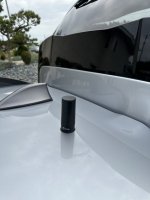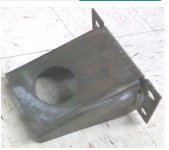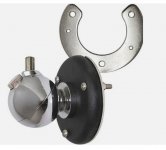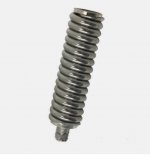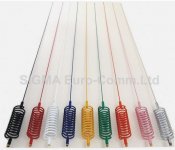Just tossing this out since I completed a Jeep install last Tuesday. We put one of the short "loaded" antennas, (Brits call them a Stinger), on a Jeep, with the small 3/8-24 spring, ball mount, and then an antenna mount bracket. The bracket is army surplus, which was mounted on the passenger's rear fender. Coax was 9913F, with the ball mount connections sealed with DAP "Ultra Clear". The antenna matched to channel 18 as 1.013 : 1.000. The band edges came up slightly, with channel 40 being the worse, (1.175 : 1.000), but on Channel 4 which is somewhat the accepted Jeep channel, the match was 1.135 : 1.000 which acceptable. He does run a BJ-300 helper amp (optional use). The reason for the additional spring is that it gives the antenna additional flexibility of you are working through wooded terrain or brush. This same "type of" spring can be uses on an NMO antenna. They sell them with the thread to the NMO and top of the spring has a hole for the rod. And you can use the Antenna mount bracket (ANT-4) for an NMO mount as well.
If you use a Stinger antenna, get the stainless version. That colored paint is hard to get off to trim the antenna, and then match the color to make it right again. Compressing the coil will only make the bandwidth of the antennas narrower.
This fellow, and the guys he hangs around with put about 7,000 miles a year on their Jeeps by going to vacation areas using the back roads. This year's challenge is to go from the Eastern UP to the Minnesota border all on back, and logging roads, primitive camping as they go. If you can't find the antenna mount at surplus, a metal shop can bend up a box-piece for you. If you use steel, get it E-Coated or at least primed and powder coated. And don't forget the ground strap from the antenna ground to the Jeep's back fender panel. In fact, we strapped from the fender down to the chassis. Use stainless with internal tooth lock washers to get a bite on the metal.
This may be overkill for what you want, but I've never had a mobile antenna installation fail. And some of the places we go, the antennas get the crap beat out of them.


